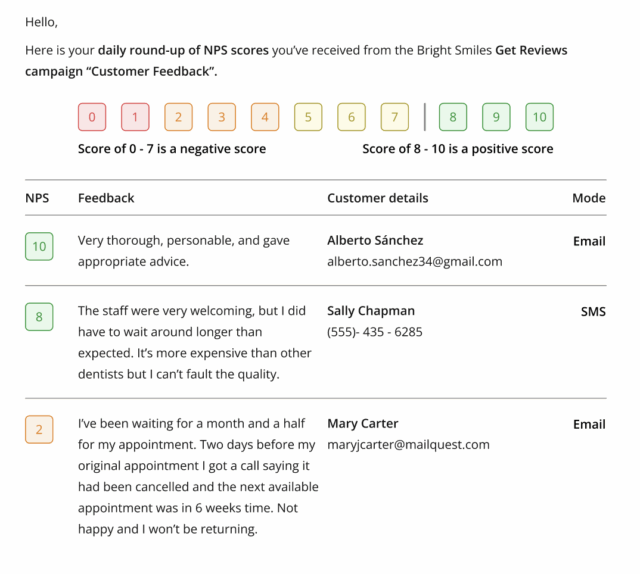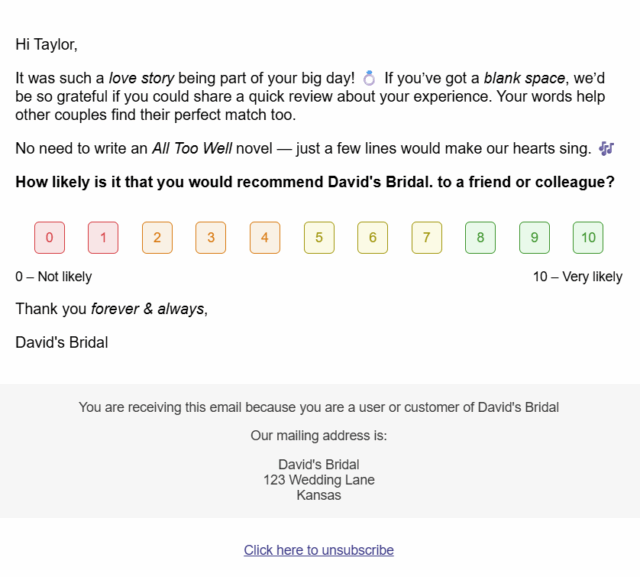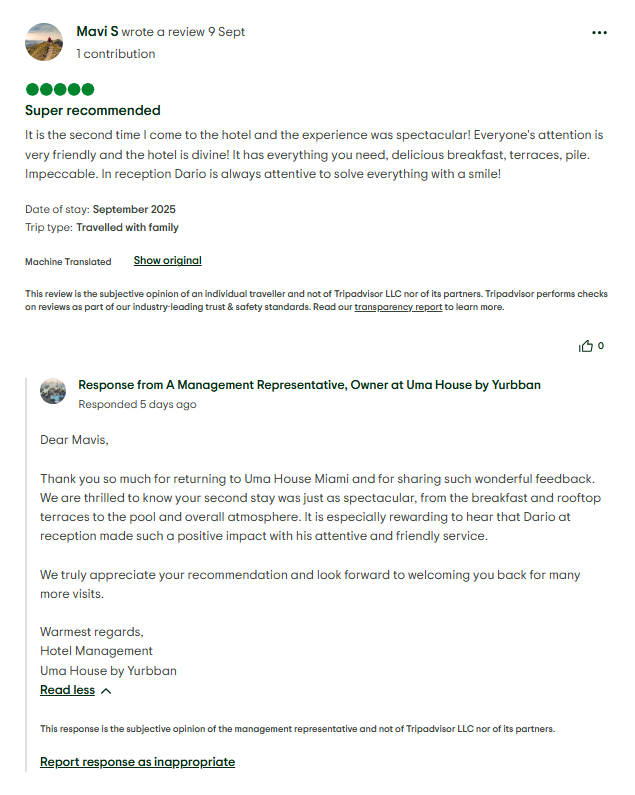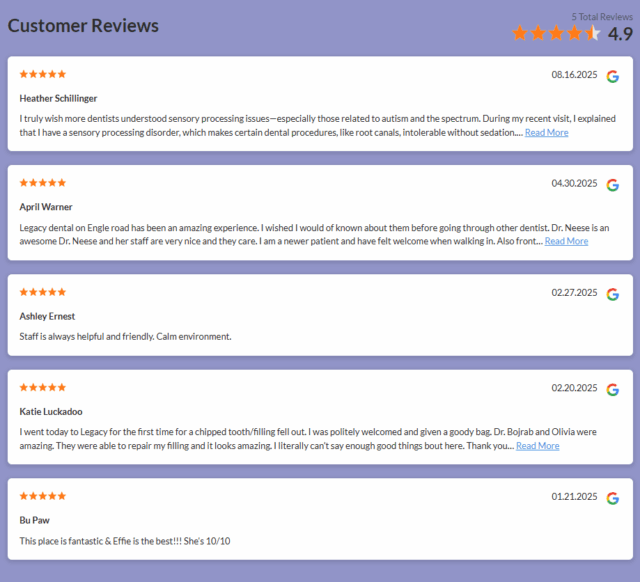
What is online review management? And how does it differ from reputation management?
Last updated on October 16th, 2025
All businesses live or die on their reputation, and in today’s digitally focused world, that often means focusing on everything that’s said about a business online.
Although reputation management and review management are often used interchangeably, they’re not the same thing. Review management focuses on collecting, monitoring, and responding to online reviews, which is an essential part of building local search visibility and winning new customers. Reputation management is broader and encompasses the entirety of a business’s reputation.
In this guide, we’ll explore reputation management and online review management, identifying the key differences, explaining why they matter, and describing how local businesses can master them.
What is online reputation management?
We live in the Information Age. Details about a business, its products, its personnel, its culture, its ethics, and how it treats its customers are available on demand, online, and in any location.
Whether you’re the head of a large national business or you run a ‘mom-and-pop’ convenience store, what people say and think about your brand and business matters.
Online reputation management (sometimes known as online presence management) is the strategy to ensure consumers find positive content about your business. A TrustPilot study found that a company’s positive online reputation was the biggest factor affecting consumer trust.
Online reputation management includes a range of tactics to emphasize favorable content and opinions about your brand. A reputation management strategy will consider how to conduct the brand messaging, how to amplify reviews, how to secure positive media mentions, and include plans for dealing with a PR crisis arising from negative publicity.
What is online review management?
While reputation management covers the full scope of brand perception, online review management focuses on one of the most influential factors: customer reviews.
Reviews are used at each stage of the buyer journey, and play a key role in the final decision to purchase or not. Our research finds that 96% of consumers read online reviews when browsing for local businesses, with 70% saying they’ve written a review in the past year. Turn your back on reviews, and they’ll face your customers without you.
The power of reviews isn’t restricted to review platforms. A cohesive online reputation management strategy will allow you to repurpose and leverage your reviews across a range of channels to amplify their impact. This could mean sharing reviews on social media, posting them on your website, creating case studies with them, or showcasing them in a TV ad.

How to build an online reputation management strategy
Developing a reputation management strategy doesn’t need to be intimidating. Think of it as a fact-finding mission followed by the creation of a plan to focus your efforts on the things that matter most to you.
Step 1: Research your current online reputation
Your first task is to understand where you stand right now. What are people saying about you? How are they rating your products and services? What is their perception of your business?
Assembling all of this information can be daunting, but you don’t have to do it manually. There are numerous tools available to automate and speed up this process.
For small amounts of data, take a sample of statements from across these channels to get a general idea of how people are feeling about your brand. Be sure not to let your unconscious bias lead you to pick only very good or very bad comments. Cast a broad net.
Step 2: Send an NPS survey
NPS (Net Promoter Score) is a scale that runs from -100 to 100. You ask a series of questions and then apply the scale to measure how willing your customers are to recommend your business.

NPS helps you to understand loyalty and sentiment. This is useful when developing your online reputation management strategy as it shows you what you’re working with, highlights any reputation problems to address, and indicates where your focus should be.
You can use a tool such as Reputation Manager to ask your customers to give you feedback or reviews, and then apply the NPS scale to determine how they feel. Make sure to repeat this on a regular basis to see where you’ve improved.
If you don’t want to email your customers, you could add an NPS pop-up to your site. Many popular CMS systems, including WordPress, have NPS plugins that you can simply download and activate.
Step 3: Find out what matters to your customers
The purpose of this step is to find out what your customers expect from you. Are they likely to forgive slow shipping if your customer service and product quality is top notch? Do they expect a highly personalized service or do they appreciate more straightforward communications?
A crucial part of this stage of the process is determining where your customer spends their time online. Which social networks do your demographic favor? Which newspapers do they read? Which forums are they active on? Which review platforms do they use?
The purpose of asking these questions is to narrow down where it’s most important to build and manage your reputation. Referring back to the research conducted in step one should give you the answers to these questions.
Step 4: Set online reputation management goals
For the time you invest in your online reputation management strategy to really pay dividends, your actions must be both measurable and accountable. The goals you set will directly influence the tactics you choose, and gauge whether or not your approach is effective.
Ask yourself what you want to achieve. For example, if the results of your NPS survey were disappointing, do you want to see that improve by the end of this project? How are you going to go about that? Does your poor online reputation stem from a genuinely poor customer experience? If so, you’ll need to start by resolving that.
You could well find that you need to add to or adjust your goals as you begin to execute your chosen reputation management tactics, and that’s fine. Don’t be afraid to adjust them as you get to work so that they continue to help you measure the success (or otherwise) of your efforts.
Step 5: Decide on your tactics
Deciding on the tactics you’ll use for reputation management is the final piece of the strategic puzzle. From review generation to social media monitoring, you’ll need to choose the activities that help you meet your reputation goals.
You might decide to take on some of these tasks yourself or within your team, but it’s also worth remembering that there are online reputation management services available to save you time.
Reputation management tactics
Deciding on the right tactics can feel tricky, so here are some tried-and-true approaches to consider.
Google Business Profile monitoring
Consumers naturally turn to Google when they want to find a local business or share their experiences, with 60% of consumers defaulting to Google or Google Maps for local searches. And yet, only 35% of SMBs have a Google Business Profile (GBP).
Claiming and monitoring your Google profile lets you stand out from the competition, collect reviews, and be visible where your customers are already looking.
In addition to the reviews function, GBP has lots of other useful features for online reputation management, such as the option to share news and offers via Posts and respond to questions in the Q&A section.
If you haven’t claimed your GBP listing yet, it’s free to do so. Our guide has step-by-step instructions.
Social media monitoring
Today’s consumers don’t just use social media to catch up with friends; it’s increasingly a place to discover new brands and products, aid in decision making, and connect with local businesses.
Adding a social media monitoring tool to your reputation management arsenal means you can keep abreast of what’s being said about your local business on social media. Popular options include HubSpot, Hootsuite, Buffer, and Sprout Social.
Monitoring brand mentions on the web
Opinions and comments about your local business aren’t just restricted to review platforms and social media; they can appear anywhere, from local newspapers and trade press to industry forums and blogs.
Keeping tabs on brand mentions online can be largely automated. Simply go to Google and set up a Google Alert for your business name.
It’s also advisable to set up alerts for your own name if you’re closely associated with the business and any brands or products specific to you. If you have the budget, there are a number of dedicated tools available. Brandwatch, Awario, Mention, Meltwater, and Brand24 are good starting points.
Public relations
Reputation management marketing isn’t just about reacting to what people are already saying; it’s also about actively creating positivity around your business. Traditionally, this falls under the umbrella of public relations and generating positive press about your company.
Gone are the days when this meant you had to be well-connected to every editor on Fleet Street. Getting your name in print is entirely achievable for local businesses, though it takes time to build momentum and secure coverage..
With that in mind, you’ll need to incorporate other PR tactics, such as sponsoring local events or organizations and entering local business awards. Both of these are also good ways to build links back to your site from reputable, relevant local sources to help with your local SEO.
HubSpot has a series of free PR templates, along with examples and tips for creating a newsworthy press release to boost the chances of your news getting picked up by journalists.
Crisis management
We’ve all heard the old saying that ‘failing to prepare is preparing to fail’. Crisis management is one area where it really does pay to be prepared. The last thing you want is to find yourself faced with a crisis and have no plan in place for minimizing the damage.
The easiest way to do this is to create a list of the worst-case scenarios you can think of. Divide them into levels of crisis, such as bad, very bad, and the worst, and then outline what to do in each instance.
Crisis management is a big deal, so it’s worth doing your research. Meltwater has a free crisis communications guide, and the Chartered Institute of Public Relations also has a best practice guide.
If you need a little inspiration, take a look at examples of the best-managed PR crises from brands, such as KFC (running out of chicken), Starbucks (reacting to the actions of a racist employee), and Crockpot (ever seen This Is Us?)
Online review management
Just 3% of consumers will use a business with two-star reviews or lower, making a poor reputation extremely costly.
Online review management covers four core areas:
- Generating reviews
- Monitoring reviews
- Responding to reviews
- Showcasing reviews
How to generate reviews
When it comes to online reviews, the recency of reviews matters as much as the quantity to consumers and search engine algorithms alike.
The best way to boost your review count is simply to ask for reviews. One easy way to do this is to set up an automated email or SMS that goes to consumers soon after their purchase or visit. Your request should thank the customer for their business and request that they leave a review to share their experience.

If your favored review platform offers a widget, you can install this small piece of code on your site to display a button inviting visitors to review your business.
Or if you have a physical brick-and-mortar store, you could hand out cards requesting a review with purchases, or have a tablet set up by the exit with your preferred review platform loaded up. This will encourage customers to leave a review right then and there. Tripadvisor and Yelp provide businesses with free stickers to pop in the window so make sure to grab yours.
How to monitor online reviews
If you don’t have reputation management software, general review sites along with niche review platforms will need to be monitored manually.
To monitor performance and find out about new reviews, it’s often much easier, quicker, and more effective to use an online reputation management tool like BrightLocal’s Reputation Manager. This is especially true if your business is present on lots of review sites or you’re managing multiple locations.
How to respond to online reviews
Negative reviews can be detrimental to your online reputation if left unanswered. So, you’ll want to reply promptly to address concerns raised and attempt to restore confidence in your business (read our tips for responding to negative reviews for inspiration).

Replying to reviews can be as simple as creating a few different templates to thank each customer for their feedback. Make sure each response is personalized to reference the reviewer’s name and refer to specific points they raised in their review. As a starting point, try:
- Thanks so much for your feedback [name of reviewer]. We’re delighted to hear we were able to help!
- Hi [reviewer name], We’re happy to hear that you enjoyed your visit and look forward to welcoming you back again soon!
- Hello [reviewer name], It’s great to hear that you enjoyed the [service or product]. Thank you for sharing your feedback!
- Hi [reviewer name], Thank you for your kind review and detailed feedback. We’re glad to hear you appreciated [insert points from review]. Your comments help us improve, and we hope to see you again soon.
How to showcase online reviews
Because reviews are so important in aiding consumer decision-making, you’ll want to show off your five-star reviews on your own site. This will serve as a conversion optimization tool and provide social proof.
Some review sites have widgets you can add to your website to show your best reviews. If you’d prefer to use reviews from a range of different review sites or jazz up the design, you’d be better off with a third-party tool like BrightLocal’s Showcase Reviews.

A final option is to manually add your favorite reviews to your website. However, this process is the least efficient, as you’ll need to regularly set time aside to update the reviews you showcase.
Related: Free Online Video Course – ‘A Beginner’s Guide to Generating and Managing Reviews‘
Mastering online reputation and reviews for long-term success
Reputation management builds a positive image for your business, while review management ensures that customer feedback actively supports that image. Reviews are often the first thing people see, making them the foundation of your reputation online.
When combined, these strategies help you highlight positive feedback, respond effectively to criticism, and guide how your brand is perceived. By managing both reputation and reviews together, you can boost visibility, earn trust, and create stronger customer relationships for long-term success.